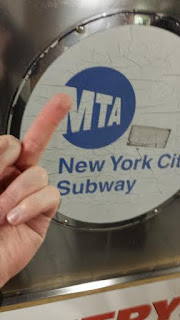New York is a city of many firsts. It was the first capital
city of the United States; it had the first hot dog, first American public
brewery, ATM, mobile phone call, and children’s museum.
It also promises to be the first American city to institute congestion pricing on cars driving into its busiest areas.
Although these fees are not expected to take effect until 2021, it could cost
motorists up to $10 to drive into Manhattan below 60th Street
according to a plan expected to be passed April 1 as part of the New York State
budget.
It could mean as much as $14 for a car and more than $20 for
a truck going into Manhattan. That’s likely going to be on top of heavy tolls
already paid to take the bridges and tunnels needed to get into Manhattan in
the first place. Cities such as London and Stockholm have instituted congestion
pricing and it’s considered a success there, but those cities have more viable
public transportation.
New York City has one of the most comprehensive public
transit systems in the country, and that’s more of a statement on how sorry the
U.S.’s transit system is than a compliment to New York.
The politicians that are advocating for congestion pricing
are doing so because they don’t want to do the hard work it would take to fully
fund the M.T.A. It means possibly raising taxes
and definitely raising fares. It means significantly reformingconstruction policies to reduce exorbitant costs. Governor
Andrew Cuomo and Mayor Bill de Blasio, who despise one another, agree 100% that
this is a good idea, which is as good a reason as any to oppose it.
People are turning more to cars because public transit is so
unreliable and unpleasant. I once worked with a man who had health issues and
had to go to the Bronx every other day from work in order to have kidney
dialysis done. He took a cab there because he couldn’t be late and his health
issues meant he couldn’t be wedged into a subway car with a few hundred of his
closes friends. He was able to get some of his cab fare subsidized, but that’s
money that could have been spent elsewhere if we had a reliable transit system,
and it’s on the backs of people like my former coworker that this new tax is going
to be balanced.
I would rather not spend about three times the regular fare
to get to work, but I know I need to be on time to work and not on the cattle
car that passes for the 7 train these days, so I splurge for an express bus.
It’s still a lot less than a cab but more expensive than a regular subway or
bus fare.
Congestion pricing is going to cost the people who can
afford it the least: cab drivers or people who have their spouses or friends
drive them to work or who are carpooling like good citizens. There will be a
significant portion of people who will avoid paying it using the sameschemes that work with the now toll-booth-free tolls and red
light cameras.
We will fight this out in the press and in the courts until
congestion pricing becomes the law of the land or not. But all that will be
time wasted building the political capital, civic will, and thoughtful plans needed
to truly fix our transit system.




